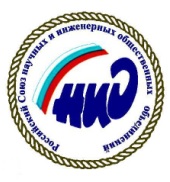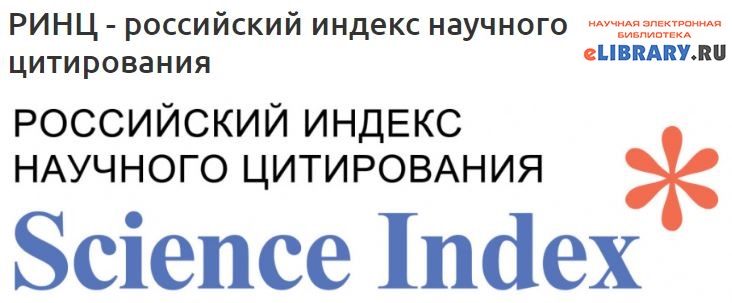Adaptation of the GOMS model for mobile applications
DOI:
https://doi.org/10.47813/2782-2818-2024-4-2-0230-0241Keywords:
GOMS, mobile applications, adaptation, testing, methods, goals, operators, selection rulesAbstract
The article highlights the trend towards universal involvement of modern humanity in the digital world at the same time as a high level of concern for their own physical and mental comfort. This problem, including today, forces market participants not only to sell their products and services and not even start websites, but to switch to the development of mobile applications that will always be at the consumer's fingertips. Moreover, to ensure competitiveness, the interface of these applications should be user-friendly and understandable. In connection with this need, the problem of the lack of mobile device testing methods in general and quantitative methods in particular becomes obvious. This problem is the main focus of the article. Examples of testing methods for separate mobile interfaces and combined methods developed initially for desktop devices and subsequently adapted for mobile devices are given. The definition of one of the desktop quantitative methods – GOMS analysis – is given and its elements are listed. The article also refers to a number of other GOMS adaptation methods that were proposed earlier by other authors. The conclusion is made about the inconsistency of these methods with modern realities. A variant of the GOMS method for mobile applications is proposed, which includes all measurable operators that can be used when interacting with mobile applications through both touch and push-button devices. The results of the experiment are demonstrated, demonstrating the execution time of operators, which can be used as a guideline for conducting tests and further research on this topic.
References
Атисков А.Ю., Давидович И.И. Тестирование эргономики пользовательского интерфейса мобильных приложений. Системы анализа и обработки данных. 2014; 4(57): 119-130. https://doi.org/10.17212/1814-1196-2014-4-119-130
Николаев Ю.В. Особенности разработки пользовательского графического интерфейса мобильных приложений. Современные проблемы и перспективные направления. 2019: 47.
Попов А.А. Программное приложение для определения наилучших условий человеко-компьютерного взаимодействия с использованием законов Фиттса и Хика. Вестник НГУЭУ. 2016; 4: 267-282.
Выживет сильнейший: как с помощью A/B‑тестов проверяют гипотезы [Электронный ресурс]. URL: https://practicum.yandex.ru/blog/chto-takoe-i-kak-provodit-a-b-testirovanie/ (Дата обращения: 30.03.2023).
Carolyn Snyder Paper Prototyping: The Fast and Easy Way to Design and Refine User Interfaces. San Francisco; 2003. 378.
Макаренко С.И. Техническая интероперабельность и эргономика человеко-машинных интерфейсов сетецентрических систем. Журнал радиоэлектроники. 2022; 3: 1684-1719. https://doi.org/10.30898/1684-1719.2022.3.4 DOI: https://doi.org/10.30898/1684-1719.2022.3.4
Как провести UX-исследование самостоятельно: 6 проверенных методов [Электронный ресурс]. URL: https://askusers.ru/blog/obuchenie/ux-issledovanie-6-proverennykh-metodov/ (Дата обращения: 26.07.2023).
Card S.K., Moran T.P., Newell A. The Psychology of Human–Computer Interaction. Lawrence Erlbaum Associates. Hillsdale: NJ; 1983.
John B., Kieras D. The GOMS Family of User Interface Analysis Techniques: Comparison and Contrast. Transactions of Computer-Human Interaction. 1999; 3(4). https://doi.org/10.1145/235833.236054
Al-Megren S. A Predictive Fingerstroke-Level Model for Smartwatch Interaction. Multimodal Technol. Interact. 2018; 2: 38. https://doi.org/10.3390/mti2030038
Li H., Liu Y., Liu J., Wang X., Li Y., Rau P.L.P. Extended KLM for Mobile Phone Interaction: A User Study Result. In Proceedings of the CHI ’10 Extended Abstracts on Human Factors in Computing Systems. Atlanta, GA, USA, 10–15 April; 2010: 3517-3522. https://doi.org/10.1145/1753846.1754011
Rice A.D., Lartigue J.W. Touch-level Model (TLM): Evolving KLM-GOMS for Touchscreen and Mobile Devices. In Proceedings of the 2014 ACM Southeast Regional Conference. Kennesaw, GA, USA, 28–29 March; 2014: 53. https://doi.org/10.1145/2638404.2638532
El Batran K., Dunlop M.D. Enhancing KLM (Keystroke-level Model) to Fit Touch Screen Mobile Devices. In Proceedings of the 16th International Conference on Human-computer Interaction with Mobile Devices, MobileHCI ’14, Toronto, ON, Canada, 23–26 September 2014; ACM: New York, NY, USA; 2014: 283-286. https://doi.org/10.1145/2628363.2628385
Lee A., Song K., Ryu H.B., Kim J., Kwon G. Fingerstroke time estimates for touchscreen-based mobile gaming interaction. Hum. Mov. Sci. 2015; 44: 211-224. https://doi.org/10.1016/j.humov.2015.09.003
REFERENCES
Atiskov A.YU., Davidovich I.I. Testirovanie ergonomiki pol'zovatel'skogo interfejsa mobil'nyh prilozhenij. Sistemy analiza i obrabotki dannyh. 2014; 4(57): 119-130. https://doi.org/10.17212/1814-1196-2014-4-119-130 (in Russian) DOI: https://doi.org/10.17212/1814-1196-2014-4-119-130
Nikolaev YU.V. Osobennosti razrabotki pol'zovatel'skogo graficheskogo interfejsa mobil'nyh prilozhenij. Sovremennye problemy i perspektivnye napravleniya. 2019: 47. (in Russian)
Popov A.A. Programmnoe prilozhenie dlya opredeleniya nailuchshih uslovij cheloveko-komp'yuternogo vzaimodejstviya s ispol'zovaniem zakonov Fittsa i Hika. Vestnik NGUEU. 2016; 4: 267-282. (in Russian)
Vyzhivet sil'nejshij: kak s pomoshch'yu A/B‑testov proveryayut gipotezy [Elektronnyj resurs]. URL: https://practicum.yandex.ru/blog/chto-takoe-i-kak-provodit-a-b-testirovanie/ (Data obrashcheniya: 30.03.2023). (in Russian)
Carolyn Snyder Paper Prototyping: The Fast and Easy Way to Design and Refine User Interfaces. San Francisco; 2003. 378.
Makarenko S.I. Tekhnicheskaya interoperabel'nost' i ergonomika cheloveko-mashinnyh interfejsov setecentricheskih sistem. Zhurnal radioelektroniki. 2022; 3: 1684-1719. https://doi.org/10.30898/1684-1719.2022.3.4 (in Russian) DOI: https://doi.org/10.30898/1684-1719.2022.2.4
Kak provesti UX-issledovanie samostoyatel'no: 6 proverennyh metodov [Elektronnyj resurs]. URL: https://askusers.ru/blog/obuchenie/ux-issledovanie-6-proverennykh-metodov/ (Data obrashcheniya: 26.07.2023). (in Russian)
Card S.K., Moran T.P., Newell A. The Psychology of Human–Computer Interaction. Lawrence Erlbaum Associates. Hillsdale: NJ; 1983.
John B., Kieras D. The GOMS Family of User Interface Analysis Techniques: Comparison and Contrast. Transactions of Computer-Human Interaction. 1999; 3(4). https://doi.org/10.1145/235833.236054 DOI: https://doi.org/10.1145/235833.236054
Al-Megren S. A Predictive Fingerstroke-Level Model for Smartwatch Interaction. Multimodal Technol. Interact. 2018; 2: 38. https://doi.org/10.3390/mti2030038 DOI: https://doi.org/10.3390/mti2030038
Li H., Liu Y., Liu J., Wang X., Li Y., Rau P.L.P. Extended KLM for Mobile Phone Interaction: A User Study Result. In Proceedings of the CHI ’10 Extended Abstracts on Human Factors in Computing Systems. Atlanta, GA, USA, 10–15 April; 2010: 3517-3522. https://doi.org/10.1145/1753846.1754011 DOI: https://doi.org/10.1145/1753846.1754011
Rice A.D., Lartigue J.W. Touch-level Model (TLM): Evolving KLM-GOMS for Touchscreen and Mobile Devices. In Proceedings of the 2014 ACM Southeast Regional Conference. Kennesaw, GA, USA, 28–29 March; 2014: 53. https://doi.org/10.1145/2638404.2638532 DOI: https://doi.org/10.1145/2638404.2638532
El Batran K., Dunlop M.D. Enhancing KLM (Keystroke-level Model) to Fit Touch Screen Mobile Devices. In Proceedings of the 16th International Conference on Human-computer Interaction with Mobile Devices, MobileHCI ’14, Toronto, ON, Canada, 23–26 September 2014; ACM: New York, NY, USA; 2014: 283-286. https://doi.org/10.1145/2628363.2628385 DOI: https://doi.org/10.1145/2628363.2628385
Lee A., Song K., Ryu H.B., Kim J., Kwon G. Fingerstroke time estimates for touchscreen-based mobile gaming interaction. Hum. Mov. Sci. 2015; 44: 211-224. https://doi.org/10.1016/j.humov.2015.09.003 DOI: https://doi.org/10.1016/j.humov.2015.09.003

Downloads
Published
How to Cite
Issue
Section
License
Copyright (c) 2024 А. В. Уженцева, Е. Ю. Мерзлякова

This work is licensed under a Creative Commons Attribution 4.0 International License.
The journal MIST - "Modern Innovations, Systems and Technologies" publishes materials under the terms of the Creative Commons Attribution 4.0 International (CC BY 4.0) license, hosted on the official website of the non-profit corporation Creative Commons: 
This work is licensed under a Creative Commons Attribution 4.0 International License.
This means that users can copy and distribute materials in any medium and in any format, adapt and transform texts, use content for any purpose, including commercial ones. At the same time, the terms of use must be observed - an indication of the author of the original work and the source: you should indicate the output of the articles, provide a link to the source, and also indicate what changes have been made























